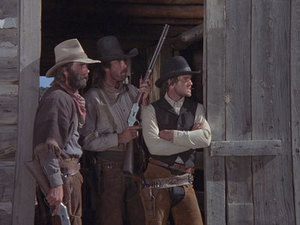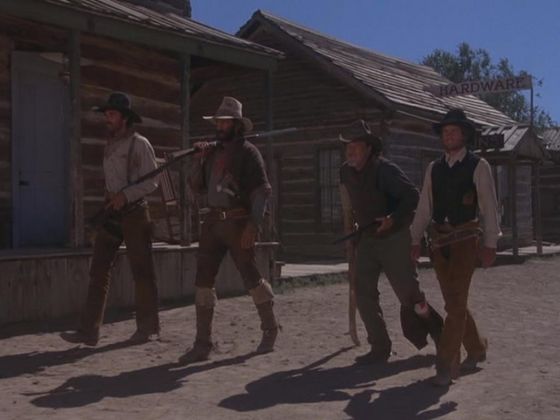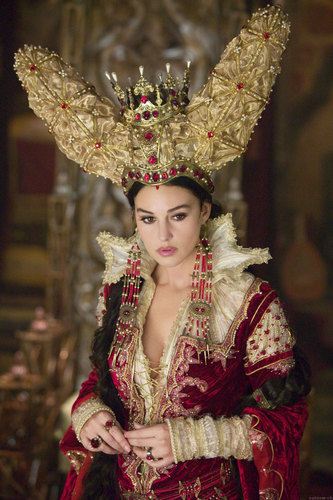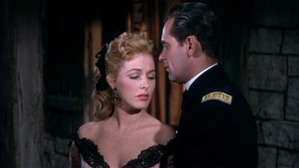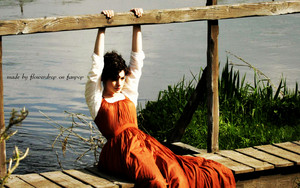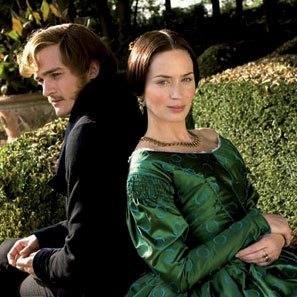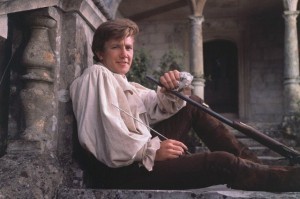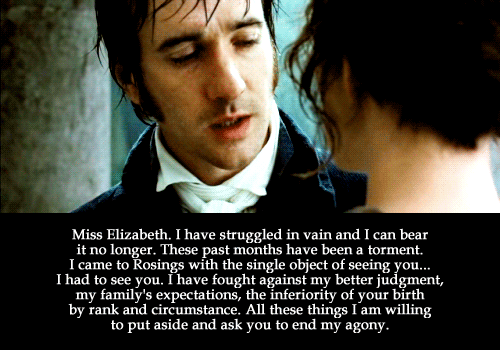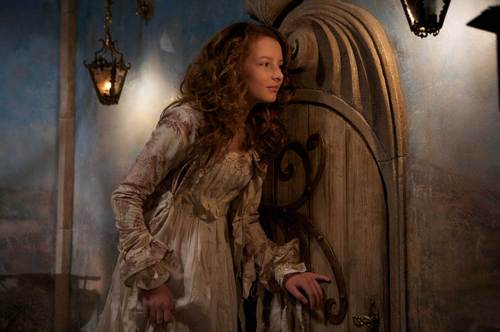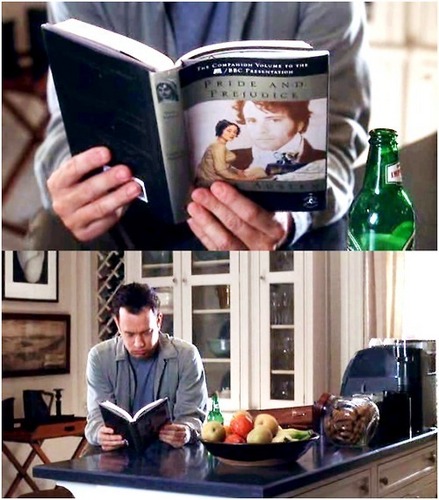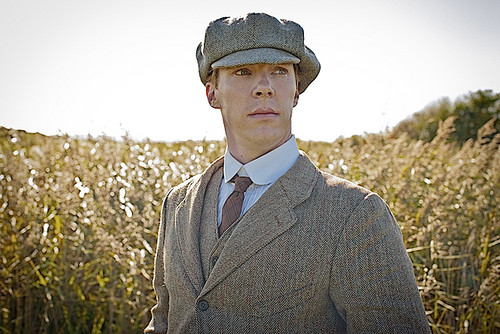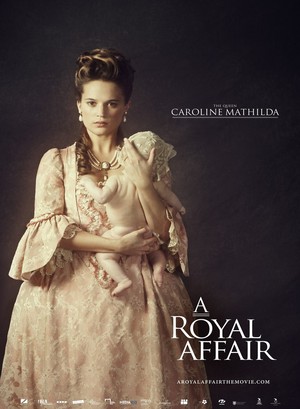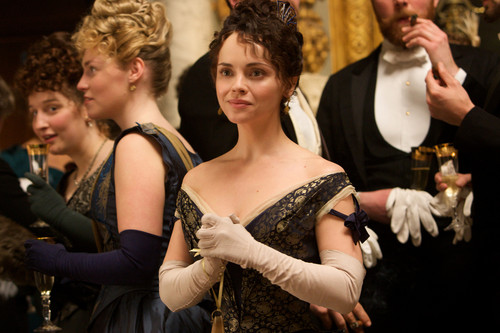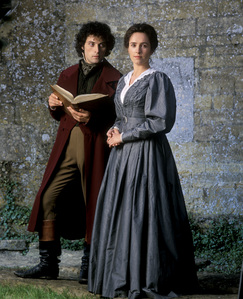Below is my review of the 1979 televisheni miniseries called ”THE SACKETTS”:
”THE SACKETTS” (1979) Review
Thirty years ago, CBS aired a two-part miniseries (or televisheni movie) based upon two novels written kwa the late Louis L’Amour. Directed kwa Robert Totten, ”THE SACKETTS” starred Sam Elliot, Tom Selleck and Jeff Osterhage as the three Sackett brothers.
”THE SACKETTS” told the story of Tell (Elliot), Orrin (Selleck) and Tyrel (Osterhage) Sackett and their efforts to make new lives for themselves in the post-Civil War West. Screenwriter Jim Byrnes took two novels about the Sackett brothers - ”The Daybreakers” (1960) and ”Sackett” (1961) - and weaved them into one story. ”The Daybreakers” mainly focused upon Tyrel and Orrin’s efforts to settle out West following the tragic circumstances of a family feud in East Tennessee. The two brothers eventually become involved in a between an elderly New Mexican rancher (Gilbert Roland) and a bigoted American businessman (John Vernon) in Santa Fe. At the same time, Tyrel struggles to keep the peace between a former New Orleans attorney named Tom Sunday (Glenn Ford), whom the two brothers had befriended during a cattle drive and Orrin. ”Sackett”, on the other hand, focused upon the oldest Sackett brother and former Civil War veteran, Tell. Tell’s story centered around his tafuta for dhahabu in the Sangre de Cristo Mountains and his problems with a family of outlaws who want revenge for Tell’s killing of their brother, a crooked gambler.
To Totten and Byrnes’ credit, they did an admirable job of fusing the two novels kwa adding two reunions between the brothers near the ends of Parts 1 and 2. They also allowed the supporting character of cap, herufi kubwa Roundtree (Ben Johnson), a grizzled former mountain man whom Tyrel and Orrin also meet on the cattle drive; to break away from the two younger brothers and jiunge Tell’s hunt for dhahabu following the three brothers’ reunion at the end of Part 1. ”THE SACKETTS” is also an entertaining and solid Western with two interesting tales that involve land feuds, romance, brotherly love, political change, vengeance and plenty of action.
One of the best aspects of the miniseries focused upon the developing hostility between the middle Sackett brother Orrin, and the brothers’ friend, Tom Sunday in Part 2. It was an interesting tale on how a solid friendship could easily sour, wamekula over a difference of opinion regarding moral compass. After cap, herufi kubwa had hooked up with Tell; Tyrel, Orrin and Sunday encountered the smoking remains of an emigrant family that had been killed kwa Ute warriors. Sunday wanted to mgawanyiko, baidisha the money between the three of them. Orrin, upon discovering a letter written to the family kwa a relative, wanted to send the money back to alisema relative. Orrin got his way. And Tom’s resentment toward Orrin ignited. That same resentment exacerbated when he Lost the election of Santa Fe’s new sheriff to the middle Sackett.
Politics also played a major role in the miniseries. The topic focused upon a feud between an aging New Mexican rancher Don Luis Alvarado (Gilbert Roland) and American businessman Jonathan Pritts (John Vernon). The feud was mainly the old Anglos vs. Mexican conflict that still dominates the Southwest to this day. The Sacketts became dragged into it, due to Orrin’s courtship of Pritts’ daughter (Marcy Hanson) and Tyrel’s romance with Don Luis’ granddaughter, Drusilla (Ana Alicia). In the end, the Sacketts and even Sunday sided with the New Mexicans. One has to applaud L’Amour for introducing this topic into the story, and for screenwriter Byrnes for maintaining it. But if I must be honest, I thought the execution of Don Luis’ feud with Pritts came off as heavy-handed and preachy.
One would think that Tell Sackett’s hunt for dhahabu would dominate his storyline. Amazingly, it did not. Well, Tell did meet and fall in upendo with a woman named Ange Kerry (Wendy Rastattar), who had been stranded in the Sangre de Cristo Mountains for several years. But his story mainly focused upon his problems with the brothers (Jack Elam, Slim Pickens and Gene Evans) of crooked gambler named Bigelow (James Gammon), whom he had killed early in Part 1. This reminded me of a line from the 1984 adventure-comedy, ”ROMANCING THE STONE” - ”But if there was one law of the West, bastards had brothers . . . who seemed to ride forever.” And both Tell and cap, herufi kubwa eventually discovered, the Bigelows had brothers and allies everywhere. One ally turned out to be an insecure gunfighter named Kid Newton (Paul Kelso), who had an unfortunate and humiliating encounter with Tell and Cap. Tell’s problems with the Bigelows culminated in a tense situation in the Sangre de Cristo foothills and a violent showdown in a nearby town.
Most of the performances featured in ”THE SACKETTS” struck me as pretty solid. To the cast’s credit, they managed to use mid-to-late 19th century dialogue without being sloppy au indulging in what I considered the cliché ”Frontier” speech pattern that seemed maarufu in the Westerns of the late 1970s and early 1980s. However, I found at least four performances that really impressed me. One of them belonged to Sam Elliott, who portrayed the oldest brother, Tell. I might as well be frank. He has always been a inayopendelewa actor of mine for a long time. With his grizzled, deep voice and demeanor, the man looked as if he had stepped out of a 19th century daguerreotype. He also did an effective job of conveying Tell Sackett’s loner personality, making it easy for viewers to accept the idea that this is a man who would wait years before contacting any members of his family.
Another performance that impressed me belonged to Jeff Osterhage as the tense, yet pragmatic youngest Sackett, Tyrel. To this day, I am amazed that Osterhage never became a big nyota in televisheni au movies. He seemed to have possessed both the looks and screen presence to become one. And I was certainly impressed kwa his ability to portray Tyrel’s pragmatic, yet intimidating nature. Traits that led him to be the best shot in the family.
I also enjoyed Wendy Rastattar’s performance as Ange Kerry, the young woman that Tell and cap, herufi kubwa had discovered in the mountains. Rastattar did a first-rate job in portraying a tough, yet passionate young woman, who ended up falling in upendo with Tell. But the best performance came from Hollywood icon, Glenn Ford as the enigmatic friend of the Sacketts, Tom Sunday. In Ford’s hands, Sunday became one of a gallery of complex characters he had portrayed during his career. For me, it was sad to watch Sunday regress from Orrin and Tyrel’s wise mentor to Orrin’s drunken and embittered foe. And Ford did an excellent job in exploring Sunday’s many nuances, including those flaws that led to his downfall.
One might noticed that I had failed to include Tom Selleck’s performance as one of the zaidi impressive ones, considering that both Elliott and Osterhage made the list. I found nothing wrong with Selleck’s performance. Unfortunately, he had the bad luck to portray Orrin, the least interesting member of the Sackett family. Orrin is an affable, yet solid character that lacked any nuances that could have made him as interesting as his brothers. A great deal happened to Orrin in this story – he Lost his bride in a family feud, fell briefly in upendo with the main villain's daughter and pissed off Tom Sunday. Yet, he was not very interesting. Which left Selleck, usually a top-notch performer, with very little to work with.
The movie’s production values struck me as very impressive. Production designer Johannes Larson, costume designers Carole Brown-James and Barton Kent James, and cinematographer Jack Whitman did an excellent job in capturing the ambiance of the Old West circa 1869-1870. Along with the director Totten, they managed to create a West during a period before it truly threatened to become settled. They managed to capture the ruggedness and beauty of the West without overcompensating themselves, like many other Westerns released after the 1960s tend to do.
Many years have passed since I have read ”The Daybreakers” and ”Sackett”. Which is my way of saying that I cannot tell whether the miniseries was a completely faithful adaptation of the two novels. If I must be honest, I really do not care whether it is faithful au not. The televisheni version of the two novels – namely ”THE SACKETTS” - is a first-rate and entertaining saga. I am certain that many mashabiki of Louis L’Amour will continue to enjoy it.
”THE SACKETTS” (1979) Review
Thirty years ago, CBS aired a two-part miniseries (or televisheni movie) based upon two novels written kwa the late Louis L’Amour. Directed kwa Robert Totten, ”THE SACKETTS” starred Sam Elliot, Tom Selleck and Jeff Osterhage as the three Sackett brothers.
”THE SACKETTS” told the story of Tell (Elliot), Orrin (Selleck) and Tyrel (Osterhage) Sackett and their efforts to make new lives for themselves in the post-Civil War West. Screenwriter Jim Byrnes took two novels about the Sackett brothers - ”The Daybreakers” (1960) and ”Sackett” (1961) - and weaved them into one story. ”The Daybreakers” mainly focused upon Tyrel and Orrin’s efforts to settle out West following the tragic circumstances of a family feud in East Tennessee. The two brothers eventually become involved in a between an elderly New Mexican rancher (Gilbert Roland) and a bigoted American businessman (John Vernon) in Santa Fe. At the same time, Tyrel struggles to keep the peace between a former New Orleans attorney named Tom Sunday (Glenn Ford), whom the two brothers had befriended during a cattle drive and Orrin. ”Sackett”, on the other hand, focused upon the oldest Sackett brother and former Civil War veteran, Tell. Tell’s story centered around his tafuta for dhahabu in the Sangre de Cristo Mountains and his problems with a family of outlaws who want revenge for Tell’s killing of their brother, a crooked gambler.
To Totten and Byrnes’ credit, they did an admirable job of fusing the two novels kwa adding two reunions between the brothers near the ends of Parts 1 and 2. They also allowed the supporting character of cap, herufi kubwa Roundtree (Ben Johnson), a grizzled former mountain man whom Tyrel and Orrin also meet on the cattle drive; to break away from the two younger brothers and jiunge Tell’s hunt for dhahabu following the three brothers’ reunion at the end of Part 1. ”THE SACKETTS” is also an entertaining and solid Western with two interesting tales that involve land feuds, romance, brotherly love, political change, vengeance and plenty of action.
One of the best aspects of the miniseries focused upon the developing hostility between the middle Sackett brother Orrin, and the brothers’ friend, Tom Sunday in Part 2. It was an interesting tale on how a solid friendship could easily sour, wamekula over a difference of opinion regarding moral compass. After cap, herufi kubwa had hooked up with Tell; Tyrel, Orrin and Sunday encountered the smoking remains of an emigrant family that had been killed kwa Ute warriors. Sunday wanted to mgawanyiko, baidisha the money between the three of them. Orrin, upon discovering a letter written to the family kwa a relative, wanted to send the money back to alisema relative. Orrin got his way. And Tom’s resentment toward Orrin ignited. That same resentment exacerbated when he Lost the election of Santa Fe’s new sheriff to the middle Sackett.
Politics also played a major role in the miniseries. The topic focused upon a feud between an aging New Mexican rancher Don Luis Alvarado (Gilbert Roland) and American businessman Jonathan Pritts (John Vernon). The feud was mainly the old Anglos vs. Mexican conflict that still dominates the Southwest to this day. The Sacketts became dragged into it, due to Orrin’s courtship of Pritts’ daughter (Marcy Hanson) and Tyrel’s romance with Don Luis’ granddaughter, Drusilla (Ana Alicia). In the end, the Sacketts and even Sunday sided with the New Mexicans. One has to applaud L’Amour for introducing this topic into the story, and for screenwriter Byrnes for maintaining it. But if I must be honest, I thought the execution of Don Luis’ feud with Pritts came off as heavy-handed and preachy.
One would think that Tell Sackett’s hunt for dhahabu would dominate his storyline. Amazingly, it did not. Well, Tell did meet and fall in upendo with a woman named Ange Kerry (Wendy Rastattar), who had been stranded in the Sangre de Cristo Mountains for several years. But his story mainly focused upon his problems with the brothers (Jack Elam, Slim Pickens and Gene Evans) of crooked gambler named Bigelow (James Gammon), whom he had killed early in Part 1. This reminded me of a line from the 1984 adventure-comedy, ”ROMANCING THE STONE” - ”But if there was one law of the West, bastards had brothers . . . who seemed to ride forever.” And both Tell and cap, herufi kubwa eventually discovered, the Bigelows had brothers and allies everywhere. One ally turned out to be an insecure gunfighter named Kid Newton (Paul Kelso), who had an unfortunate and humiliating encounter with Tell and Cap. Tell’s problems with the Bigelows culminated in a tense situation in the Sangre de Cristo foothills and a violent showdown in a nearby town.
Most of the performances featured in ”THE SACKETTS” struck me as pretty solid. To the cast’s credit, they managed to use mid-to-late 19th century dialogue without being sloppy au indulging in what I considered the cliché ”Frontier” speech pattern that seemed maarufu in the Westerns of the late 1970s and early 1980s. However, I found at least four performances that really impressed me. One of them belonged to Sam Elliott, who portrayed the oldest brother, Tell. I might as well be frank. He has always been a inayopendelewa actor of mine for a long time. With his grizzled, deep voice and demeanor, the man looked as if he had stepped out of a 19th century daguerreotype. He also did an effective job of conveying Tell Sackett’s loner personality, making it easy for viewers to accept the idea that this is a man who would wait years before contacting any members of his family.
Another performance that impressed me belonged to Jeff Osterhage as the tense, yet pragmatic youngest Sackett, Tyrel. To this day, I am amazed that Osterhage never became a big nyota in televisheni au movies. He seemed to have possessed both the looks and screen presence to become one. And I was certainly impressed kwa his ability to portray Tyrel’s pragmatic, yet intimidating nature. Traits that led him to be the best shot in the family.
I also enjoyed Wendy Rastattar’s performance as Ange Kerry, the young woman that Tell and cap, herufi kubwa had discovered in the mountains. Rastattar did a first-rate job in portraying a tough, yet passionate young woman, who ended up falling in upendo with Tell. But the best performance came from Hollywood icon, Glenn Ford as the enigmatic friend of the Sacketts, Tom Sunday. In Ford’s hands, Sunday became one of a gallery of complex characters he had portrayed during his career. For me, it was sad to watch Sunday regress from Orrin and Tyrel’s wise mentor to Orrin’s drunken and embittered foe. And Ford did an excellent job in exploring Sunday’s many nuances, including those flaws that led to his downfall.
One might noticed that I had failed to include Tom Selleck’s performance as one of the zaidi impressive ones, considering that both Elliott and Osterhage made the list. I found nothing wrong with Selleck’s performance. Unfortunately, he had the bad luck to portray Orrin, the least interesting member of the Sackett family. Orrin is an affable, yet solid character that lacked any nuances that could have made him as interesting as his brothers. A great deal happened to Orrin in this story – he Lost his bride in a family feud, fell briefly in upendo with the main villain's daughter and pissed off Tom Sunday. Yet, he was not very interesting. Which left Selleck, usually a top-notch performer, with very little to work with.
The movie’s production values struck me as very impressive. Production designer Johannes Larson, costume designers Carole Brown-James and Barton Kent James, and cinematographer Jack Whitman did an excellent job in capturing the ambiance of the Old West circa 1869-1870. Along with the director Totten, they managed to create a West during a period before it truly threatened to become settled. They managed to capture the ruggedness and beauty of the West without overcompensating themselves, like many other Westerns released after the 1960s tend to do.
Many years have passed since I have read ”The Daybreakers” and ”Sackett”. Which is my way of saying that I cannot tell whether the miniseries was a completely faithful adaptation of the two novels. If I must be honest, I really do not care whether it is faithful au not. The televisheni version of the two novels – namely ”THE SACKETTS” - is a first-rate and entertaining saga. I am certain that many mashabiki of Louis L’Amour will continue to enjoy it.


